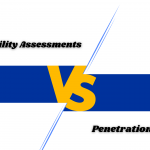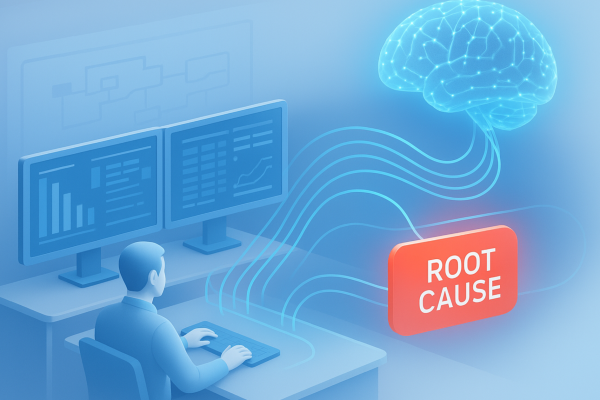Security Incident Management Framework: A Comprehensive Guide
Introduction
In today’s digital age, the threat of security incidents looms large over organizations of all sizes. Whether it’s a data breach, a cyber attack, or an insider threat, the consequences can be devastating. To mitigate these risks, organizations need a robust security incident management framework. This framework ensures that when incidents occur, they are managed effectively to minimize damage and prevent future occurrences. Security incident management is not just a reactive measure but a proactive approach to safeguard an organization’s assets, reputation, and overall security posture.
What is Security Incident Management?
Security incident management is a structured approach to identifying, managing, recording, and analyzing security incidents in real-time. The goal is to handle incidents swiftly and effectively to minimize their impact and prevent recurrence. This process involves a combination of technologies, processes, and people working together to detect, respond to, and recover from security incidents. It ensures that any deviations from normal operations, which might indicate a security threat, are addressed promptly and effectively.
Steps in the Security Incident Management Process
Effective security incident management involves a series of well-defined steps. These steps ensure a systematic response to security incidents, allowing organizations to manage and mitigate risks efficiently.
1. Preparation
Preparation is the first and most crucial step in the incident management process. It involves establishing and maintaining the necessary policies, procedures, and tools to respond to incidents. Key activities include:
- Developing an Incident Response Plan (IRP): A documented strategy outlining how incidents will be managed and by whom.
- Training and Awareness Programs: Ensuring that all staff members are aware of their roles in incident management and are trained to recognize and report incidents.
- Establishing Communication Channels: Setting up clear lines of communication for reporting and managing incidents.
2. Identification
The identification phase involves detecting and reporting potential security incidents. This step is critical for early detection and involves:
- Monitoring Systems: Using automated tools and security information and event management (SIEM) systems to continuously monitor network activity.
- Analyzing Alerts: Reviewing alerts generated by monitoring systems to identify genuine security incidents.
- Reporting: Ensuring that all identified incidents are reported immediately to the appropriate personnel.
3. Containment
After identifying an incident, the subsequent step is to contain it to avoid additional damage.Containment can be short-term or long-term, depending on the nature of the incident:
- Short-Term Containment: Immediate actions taken to isolate the affected systems and prevent the incident from spreading.
- Long-Term Containment: Developing and implementing strategies to allow affected systems to operate in a secure state until they are fully remediated.
4. Eradication
Eradication involves finding the root cause of the incident and removing the threat from the environment. This step may include:
- Removing Malware: Deleting malicious software and ensuring it cannot re-infect systems.
- Identifying Vulnerabilities: Assessing the system for vulnerabilities that were exploited and fixing them.
- System Recovery: Ensuring systems are clean and ready to be brought back online.
5. Recovery
The recovery phase focuses on restoring affected systems and services to normal operation while ensuring that no residual threats remain. Key activities include:
- Restoring Systems: Bringing systems back online in a controlled manner.
- Monitoring for Recurrence: Continuously monitoring the systems to ensure the incident does not recur.
- Validating Systems: Testing systems to confirm they are functioning correctly and securely.
6. Lessons Learned
The final step in the incident management process is to review and analyze the incident to understand what happened and how it can be prevented in the future. This involves:
- Incident Review: Conducting a thorough post-incident analysis to identify what worked well and what did not.
- Documentation: Recording all details of the incident and the response actions taken.
- Improvement: Updating policies, procedures, and training based on the lessons learned to improve future incident response.
Importance of Security Incident Management
Security incident management is crucial for several reasons:
Minimizes Damage:
A well-implemented incident management process helps to minimize the damage caused by security incidents. Quick detection and response can significantly reduce the impact on an organization’s operations, finances, and reputation
Enhances Security Posture:
By continuously monitoring and responding to security incidents, organizations can improve their overall security posture. This proactive approach helps in identifying and mitigating vulnerabilities before they can be exploited.
Regulatory Compliance:
Many industries are subject to strict regulatory requirements regarding data protection and incident management. Having a robust incident management framework helps organizations comply with these regulations, avoiding legal penalties and ensuring the protection of sensitive information.
Protects Reputation:
A security incident can severely damage an organization’s reputation. Effective incident management demonstrates to customers, partners, and stakeholders that the organization takes security seriously and is capable of handling threats efficiently.
Facilitates Continuous Improvement
The lessons learned from each incident provide valuable insights that can be used to improve security measures continuously. This ensures that the organization is better prepared for future incidents.
Top Security Incident Management Platforms
Several platforms offer comprehensive solutions for security incident management. Here are some of the top platforms available today:
Splunk:
Splunk is a powerful platform for real-time monitoring, searching, and analyzing machine data. It provides robust security incident management capabilities, including automated detection, response, and reporting.
IBM QRadar:
IBM QRadar is a leading SIEM solution that helps organizations detect and respond to security incidents in real-time. It offers advanced analytics, threat intelligence integration, and automated response capabilities.
McAfee MVISION:
McAfee MVISION is a cloud-native security platform that provides comprehensive security incident management features. It offers advanced threat detection, automated response, and detailed reporting capabilities
ServiceNow Security Operations:
ServiceNow Security Operations provides a unified platform for managing security incidents and vulnerabilities. It offers automated workflows, threat intelligence integration, and robust reporting and analytics capabilities.
Microsoft Azure Sentinel:
Azure Sentinel is a cloud-native SIEM and SOAR solution that leverages artificial intelligence to provide intelligent security analytics and threat intelligence. It offers comprehensive security incident management capabilities, including automated response and advanced analytics.
Conclusion
In an increasingly digital world, security incident management is essential for protecting organizational assets and maintaining trust with stakeholders. By implementing a robust security incident management framework, organizations can ensure that they are prepared to detect, respond to, and recover from security incidents effectively.
From preparation and identification to containment, eradication, recovery, and learning, each step in the incident management process plays a vital role in minimizing damage and improving security posture. The integration of automation further enhances the efficiency and effectiveness of incident management efforts.
Choosing the right security incident management platform is also crucial. Platforms like Splunk, IBM QRadar, McAfee MVISION, Cortex XSOAR, ServiceNow Security Operations, Microsoft Azure Sentinel offer comprehensive solutions to help organizations manage and mitigate security incidents.
In conclusion, security incident management is not just a reactive measure but a proactive strategy that is critical for safeguarding an organization’s digital assets and ensuring long-term success in a dynamic threat landscape.
Author






